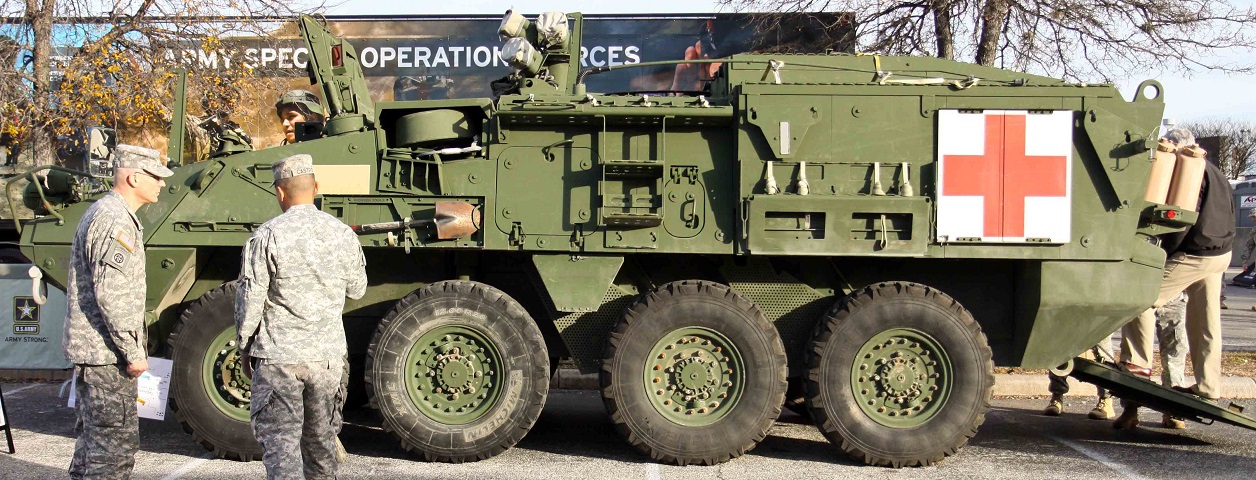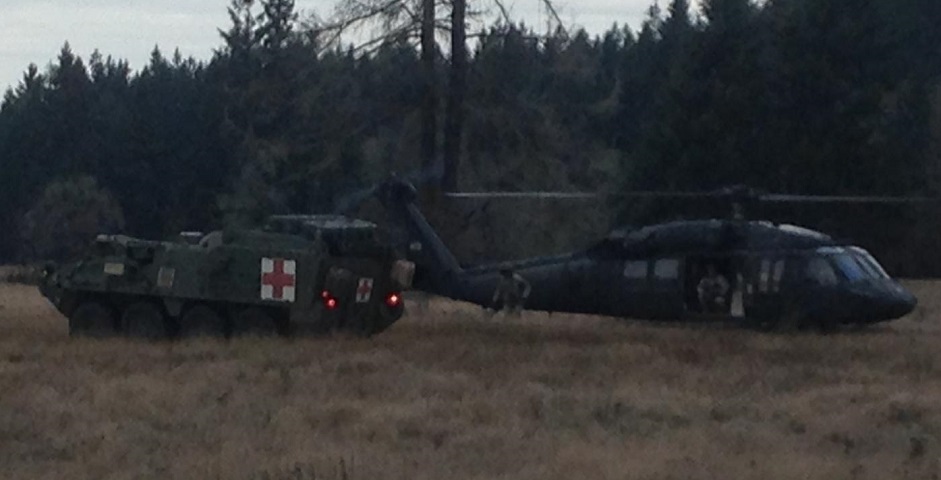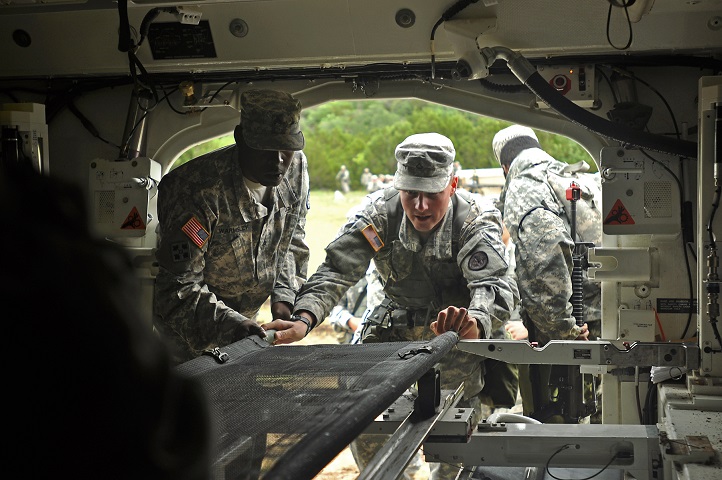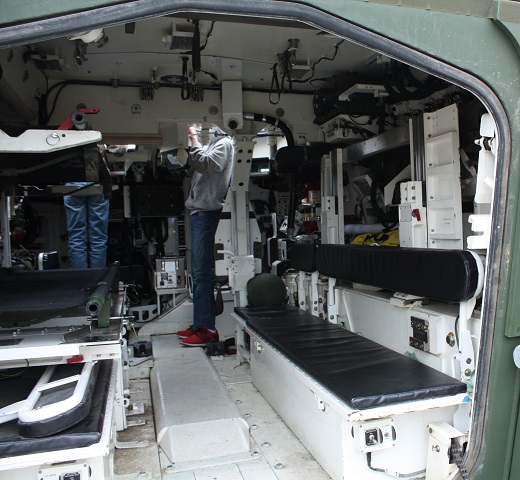
Medical Evacuation Vehicle M1133 Stryker at the Alamodome, San Antonio, Texas.

The enlarged rear compartment is obvious on this Stryker MEV. The sides of the compartment are vertical in contrast to the sloping sides of the front of the vehicle, and the taller roof that slopes downward at the rear can be seen. Hinged red cross placards are provided on each side as well as front or rear; these can be folded closed if desired. The smoke grenade launchers in front of the vehicle commander's station are protected by canvas covers. The soldier's head above the driver's station is printed on the billboard to the rear. In this image, COL Jim Iacocca, deputy commander, U.S. Army Recruiting Command, receives a situational brief from SGT Roberto Castro, Training Support Company, 32nd Medical Brigade, Joint Base San Antonio‚ Fort Sam Houston, Texas, at a display being set up for the 2014 US Army All-American Bowl. (Picture taken 2 Jan 2014 by SFC Lisa M. Litchfield; available from Defense Video & Imagery Distribution System.)

The relative sizes of the Stryker MEV and the UH-60 Black Hawk helicopter are illustrated here. Note also the stowage on the roof of the vehicle. (Picture taken 13 Nov 2014 by 1LT Barry Chavez; available from Defense Video & Imagery Distribution System.)

The rear compartment of the vehicle is shown here. The pull out tray for the litter lift system is deployed, and an empty litter has been placed on top of it. The device can stow the litter in the travel position after the litter has been locked into place. The seatbacks for the three seats under the litter have been folded forward. Here SGT Toree Warmsley (left), a combat medic with 4th Squadron "Longknife," 3rd Cavalry Regiment, instructs PFC Huley Reed, a combat medic with Medical Troop, Regimental Support Squadron, 3rd Cavalry Regiment, on how to load a stretcher into the back of the vehicle. (Picture taken 5 May 2014 by SGT Matthew Thompson; available from Defense Video & Imagery Distribution System.)

The left side seatbacks are folded down, allowing the two litters to be in place, while the right side seats are set for healthy troops or ambulatory patients. The commander's hatch on the right and the medical attendant's hatch on the left are occupied by spectators. (Photo by Richard S. Eshleman.)

Note that the left hand seat bench is shorter than the one on the right. (Photo by Richard S. Eshleman.)

The driver's position is shown here. The steering wheel is obvious, and to its front is the driver's vision enhancer monitor. Under the steering wheel to the left is the controller for the vehicle's height management system. A fire extinguisher is stowed to his left rear, and above this is the power distribution panel. The green box to his right is for intercom control, and the white tube to his right rear is for ventilation. The numbered panels on the right are for engine access. (Photo by Richard S. Eshleman.)